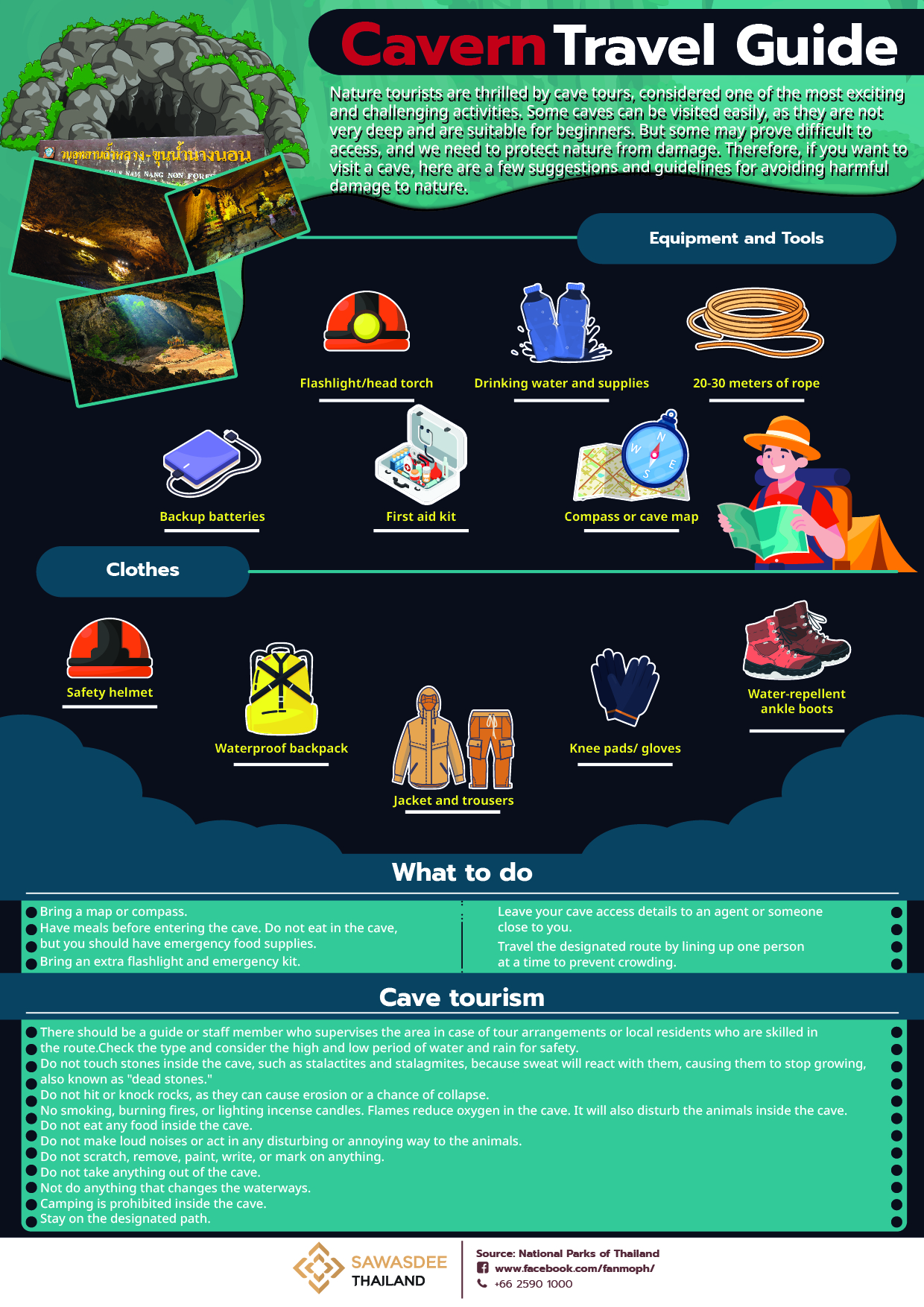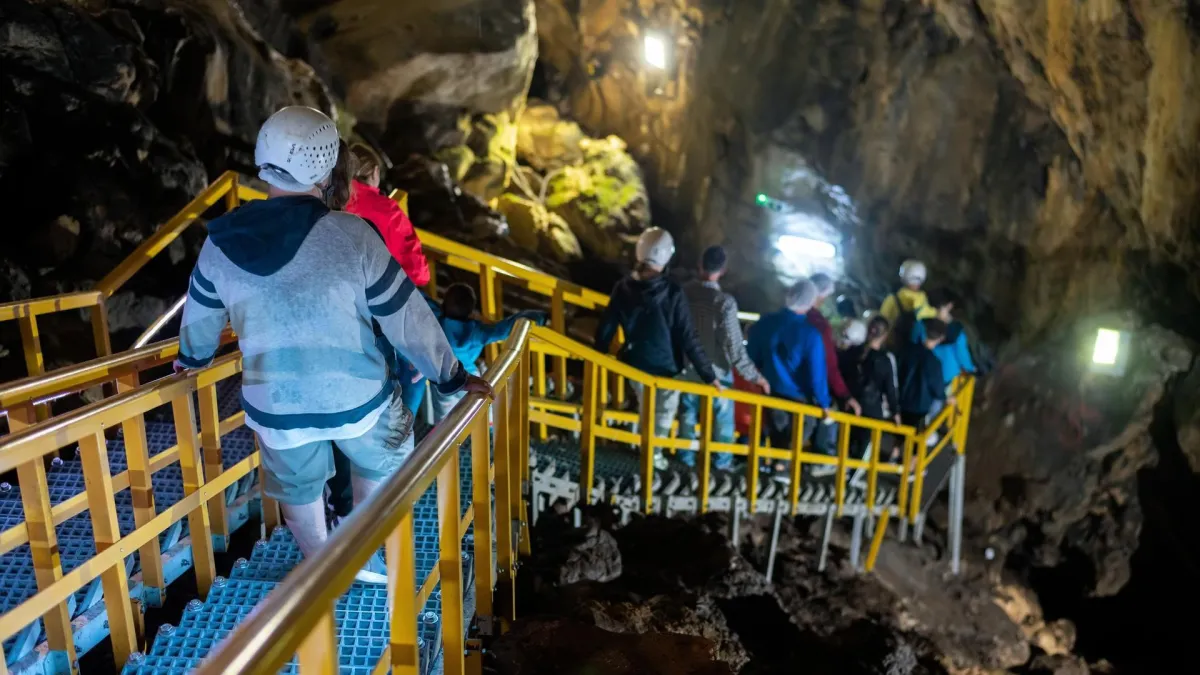Cavern Travel Guide
Many nature tourists are eager to take advantage of cave tours, considered one of the most exciting and challenging activities. Some caves can be visited easily, and they are not very deep and are suitable for beginners. But some may have difficulty accessing them, and we still need to preserve nature and protect it from damage. Therefore, before you visit a cave, here are some suggestions and guidelines to help you avoid causing damage to the natural wonder:
Equipment and Tools Preparation
- Flashlight/ head torch;
- Drinking water and supplies;
- A rope 20-30 meters in length;
- Backup batteries;
- First aid kit;
- Compass or cave map.
Clothes
- Safety hats;
- Waterproof backpack;
- Long-sleeved shirt, long trousers;
- Knee pads/gloves;
- Water-resistant full boots or ankle boots.
What to do
- Bring a map or compass;
- Have meals before entering the cave, do not eat in the cave, but you should bring some food supplies;
- Bring a flashlight or emergency kit;
- Leave your cave trekking details with an agent or someone close to you;
- Travel the designated route by lining up one person at a time to prevent harm.
Cave tourism
- There should be a guide or staff member who supervises the area in case of tour arrangements; if an official guide is not available, local residents who are skilled in the route make good guides;
- Check the type of cave and consider the up-down, high-low period of water and rain to avoid being trapped;
- Do not touch stones inside the cave, such as stalactites and stalagmites, because sweat will react with them, causing them to stop growing, also known as "dead stones;"
- Do not hit or knock rocks, as that can cause erosion or even a chance of collapse;
- No smoking, burning fires, or lighting incense candles; fire reduces the oxygen in the cave. It will also disturb the animals inside the cave;
- Do not eat any food inside the cave;
- Do not make loud noises or act in any disturbing or annoying way to the animals;
- Do not scratch, remove, paint, spray paint, or write names on anything;
- Do not store anything in the cave or take anything out of the cave;
- Not do anything that changes the waterways;
- Camping is prohibited inside the cave;
- Stay on the designated path.
Source: National Parks of Thailand, No. 61, Seam Nakhasatien Building, 7th-9th Floor, Phaholyothin Road, Lat Yao Subdistrict, Chatuchak District, Bangkok 10900
Tel. +66 2562 0760
For more information


